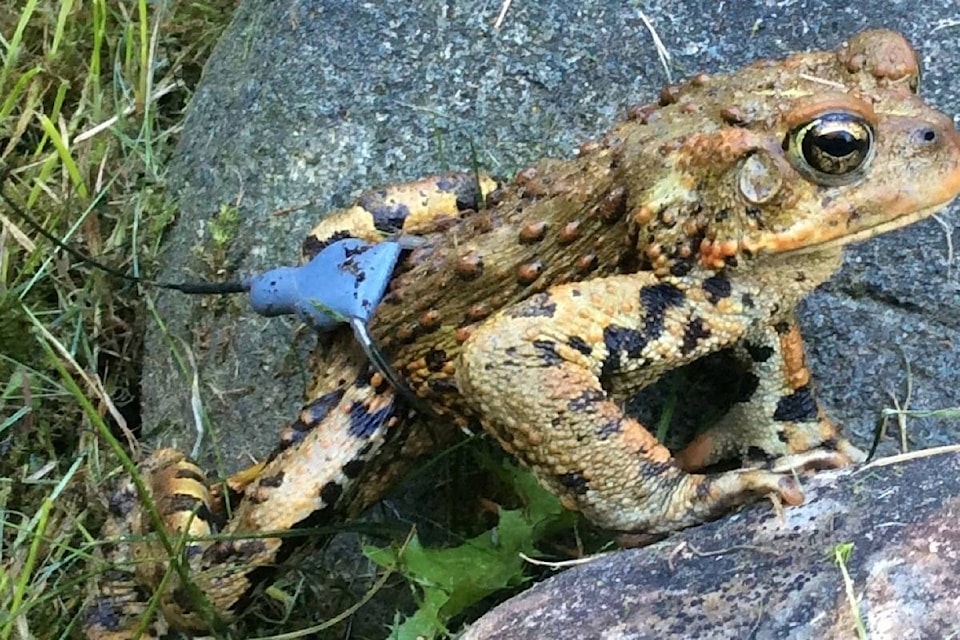A three-year study of Cowichan Valley Western Toad migration habits has concluded and researchers are set to present their findings starting at 7 p.m. on Tuesday, Oct. 24 at the Sahtlam Firehall.
Western Toads (Anaxyrus boreas) are listed federally and in B.C. as Special Concern. Researchers have been spending the last few years learning about them and their breeding, migration and hibernation patterns in the hopes of developing best practices for habitat protection and population improvement.
Each fall during the study, volunteers captured toads and secured transmitters to them before releasing them. They then checked on their tiny subjects once or twice a week over the fall and winter to see where their winter hibernation sites ended up being.
“For some amphibians, such as the Western Toad, their extensive migrations often involve having to cross roads, where they are at risk of being hit by a passing vehicle. We took advantage of this road-crossing behaviour to help us locate and catch toads so that we could fit them with radio transmitters,” said a press release issued by the study group. “We also asked a large group of volunteers to keep an eye out for toads in their yards, driveways, and on the road.”
All told, they captured 60 toads and identified 28 confirmed hibernation sites.
Specifically, they wanted to know where the sites were, whether multiple toads shared the same sites and how far they travelled to get to them. They tracked the microclimate and set up remote cameras and measured habitat variables and now have three years’ worth of data to comb through. They expect it to take a year to do.
The preliminary results are interesting.
“The results from our field work indicated that the majority of Western Toads in the Duncan area moved long distances in the fall, and that many moved in the direction of or closer to their breeding site for winter hibernation. For example, one male moved approximately two kilometres over a two-week period to get to his hibernation location,” said the release. “Interestingly, males tended to hibernate closer to the breeding site than females, which makes sense. Males want to be the first ones to the breeding site in the spring in order to intercept as many incoming females as possible for breeding.”
The study group wanted to thank all of the volunteers for helping to locate and track the toads over the years — and to thank the landowners for making their properties available to researchers.
More detailed findings of the study will be presented at the meeting on Oct. 24.
“We hope to see the community volunteers and other interested supporters at this meeting,” said the release.
To learn more about the project visit http://cowichanvalleywesterntoadproject.blogspot.ca
